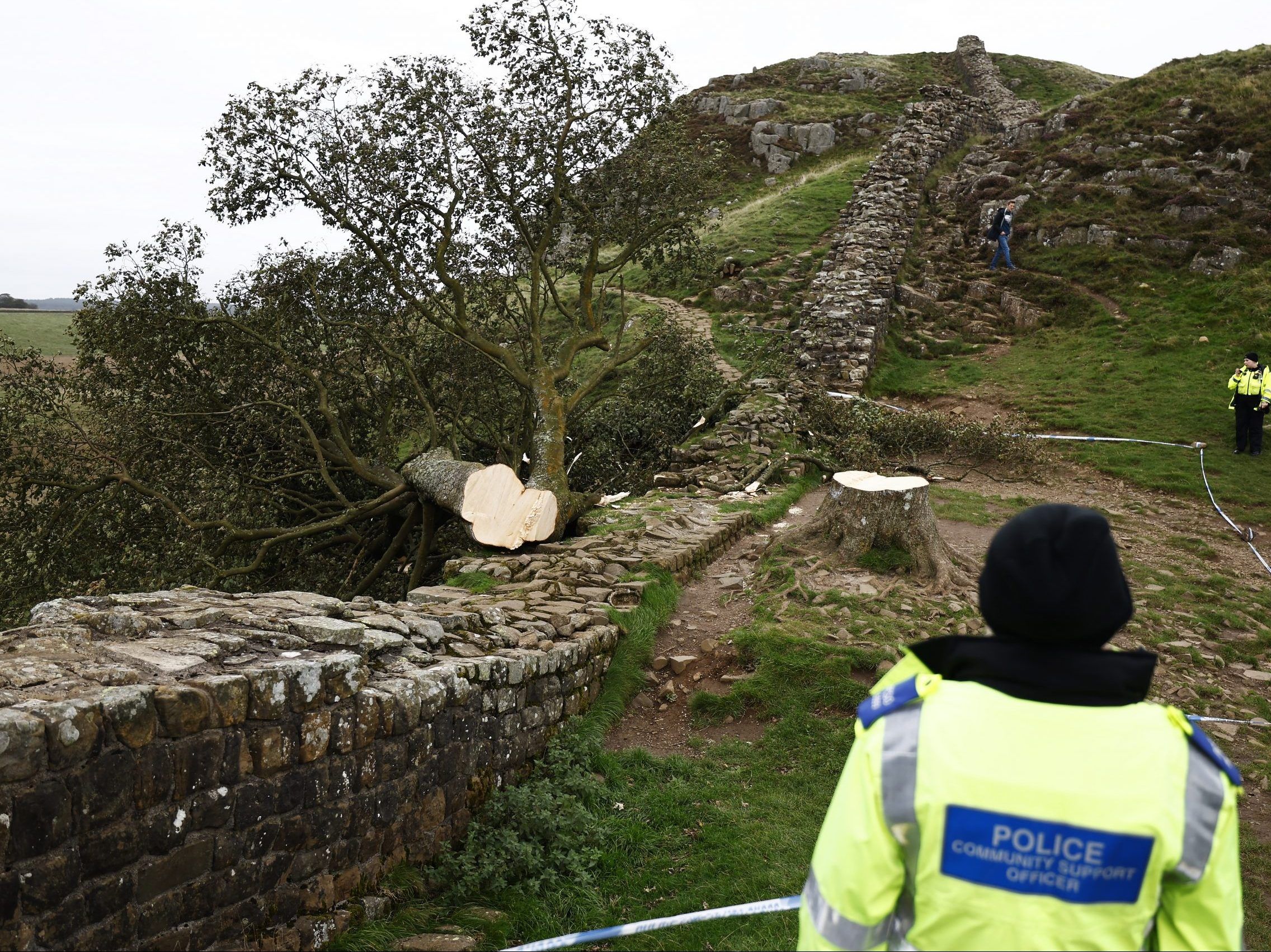Severe drought in Amazon reveals millennia-old carvings
Author of the article:Associated Press
Associated Press
Fernando Crispim And Edmar Barros
Published Oct 28, 2023 • 2 minute read
Archaeologist Jaime Oliveira sits next to rock paintings
Archaeologist Jaime Oliveira sits next to rock paintings at the Ponta das Lajes archaeological site, in the rural area of Manaus, Brazil, Saturday, Oct. 28, 2023. PHOTO BY EDMAR BARROS /Associated Press
MANAUS — The Negro River, the major tributary that runs through the Brazilian Amazon, has reached historic lows, revealing millennia-old carvings previously hidden under water.
The engravings deeply etched into the black rock along the riverbanks represent human faces, animals and other figures, and are thought to be 1,000 to 2,000 years old, archaeologists said.
“They allow us to understand the way of life of prehistoric populations,” Jaime de Santana Oliveira, an archaeologist with Brazil’s National Historic and Artistic Heritage Institute, said.
The scientists think other rocks at the site were used to sharpen arrows and stone tools.
The Ponto das Lajes archaeological site is located in the rural area of Manaus, the largest city and capital of Amazonas state. From there, locals and tourists can observe the “Meeting of Waters,” which occurs when the dark, Coca-Cola-coloured Negro River and the pale, clay-coloured Solimoes River converge without merging and run parallel to each other over several miles.
The petroglyphs first were spotted in 2010, when another bad drought struck the region, but had not been observable since then before the current drought.
Low river levels in Amazonas have turned once navigable rivers into endless sand banks and mud, leaving hundreds of communities isolated. Public authorities have scrambled to get food and water to those communities in recent weeks.
Earlier this week, The Associated Press observed the delivery of basic goods. Boats had to dock miles away, forcing residents, most of them small farmers and fishermen, to walk long distances.
Manaus and other nearby cities are experiencing high temperatures and heavy smoke from fires set for deforestation and pasture clearance. The drought is also the likely cause of dozens of river dolphin deaths in Tefe Lake, near the Amazon River.
Dry spells are part of the Amazon’s cyclical weather pattern, usually from May to October. This season’s drought has been fiercer than usual due to two climate phenomena: the warming of northern tropical Atlantic Ocean waters and El Nino — the warming of surface waters in the Equatorial Pacific region.
![Brazil-Amazon-Drought-2023-10-28[1].jpg Brazil-Amazon-Drought-2023-10-28[1].jpg](https://forums.canadiancontent.net/data/attachments/18/18094-8b67639d35d2782a4ae56a5c33d7bdbf.jpg)

 torontosun.com
torontosun.com
Author of the article:Associated Press
Associated Press
Fernando Crispim And Edmar Barros
Published Oct 28, 2023 • 2 minute read
Archaeologist Jaime Oliveira sits next to rock paintings
Archaeologist Jaime Oliveira sits next to rock paintings at the Ponta das Lajes archaeological site, in the rural area of Manaus, Brazil, Saturday, Oct. 28, 2023. PHOTO BY EDMAR BARROS /Associated Press
MANAUS — The Negro River, the major tributary that runs through the Brazilian Amazon, has reached historic lows, revealing millennia-old carvings previously hidden under water.
The engravings deeply etched into the black rock along the riverbanks represent human faces, animals and other figures, and are thought to be 1,000 to 2,000 years old, archaeologists said.
“They allow us to understand the way of life of prehistoric populations,” Jaime de Santana Oliveira, an archaeologist with Brazil’s National Historic and Artistic Heritage Institute, said.
The scientists think other rocks at the site were used to sharpen arrows and stone tools.
The Ponto das Lajes archaeological site is located in the rural area of Manaus, the largest city and capital of Amazonas state. From there, locals and tourists can observe the “Meeting of Waters,” which occurs when the dark, Coca-Cola-coloured Negro River and the pale, clay-coloured Solimoes River converge without merging and run parallel to each other over several miles.
The petroglyphs first were spotted in 2010, when another bad drought struck the region, but had not been observable since then before the current drought.
Low river levels in Amazonas have turned once navigable rivers into endless sand banks and mud, leaving hundreds of communities isolated. Public authorities have scrambled to get food and water to those communities in recent weeks.
Earlier this week, The Associated Press observed the delivery of basic goods. Boats had to dock miles away, forcing residents, most of them small farmers and fishermen, to walk long distances.
Manaus and other nearby cities are experiencing high temperatures and heavy smoke from fires set for deforestation and pasture clearance. The drought is also the likely cause of dozens of river dolphin deaths in Tefe Lake, near the Amazon River.
Dry spells are part of the Amazon’s cyclical weather pattern, usually from May to October. This season’s drought has been fiercer than usual due to two climate phenomena: the warming of northern tropical Atlantic Ocean waters and El Nino — the warming of surface waters in the Equatorial Pacific region.
![Brazil-Amazon-Drought-2023-10-28[1].jpg Brazil-Amazon-Drought-2023-10-28[1].jpg](https://forums.canadiancontent.net/data/attachments/18/18094-8b67639d35d2782a4ae56a5c33d7bdbf.jpg)

Severe drought in Amazon reveals millennia-old carvings
Negro River, the major tributary that runs through the Amazon, has reached historic lows, revealing millennia-old carvings previously hidden





![1695093573.jpg-scaled-e1695916432353[1].jpeg 1695093573.jpg-scaled-e1695916432353[1].jpeg](https://forums.canadiancontent.net/data/attachments/18/18145-a2f035d889b74544dfb9c18554e38a44.jpg)






![Japan-Island-2023-11-09[1].jpg Japan-Island-2023-11-09[1].jpg](https://forums.canadiancontent.net/data/attachments/18/18226-72147ef03b192c06ddca6f3439ba4826.jpg)


![supervolcanoes-1[1].jpg supervolcanoes-1[1].jpg](https://forums.canadiancontent.net/data/attachments/18/18239-cbb0824dd3f954359b1f2558b2e30bad.jpg)


![20231109211136-654d974e007c2ecec01152dejpeg-scaled-e1699664602246[1].jpg 20231109211136-654d974e007c2ecec01152dejpeg-scaled-e1699664602246[1].jpg](https://forums.canadiancontent.net/data/attachments/18/18242-6ffccfecd22544780344f8a470daab05.jpg)

![20231109211136-654d9751007c2ecec01152dfjpeg-scaled[1].jpg](/data/attachments/18/18241-068d32b5b1772cec4f678e2885abc581.jpg)